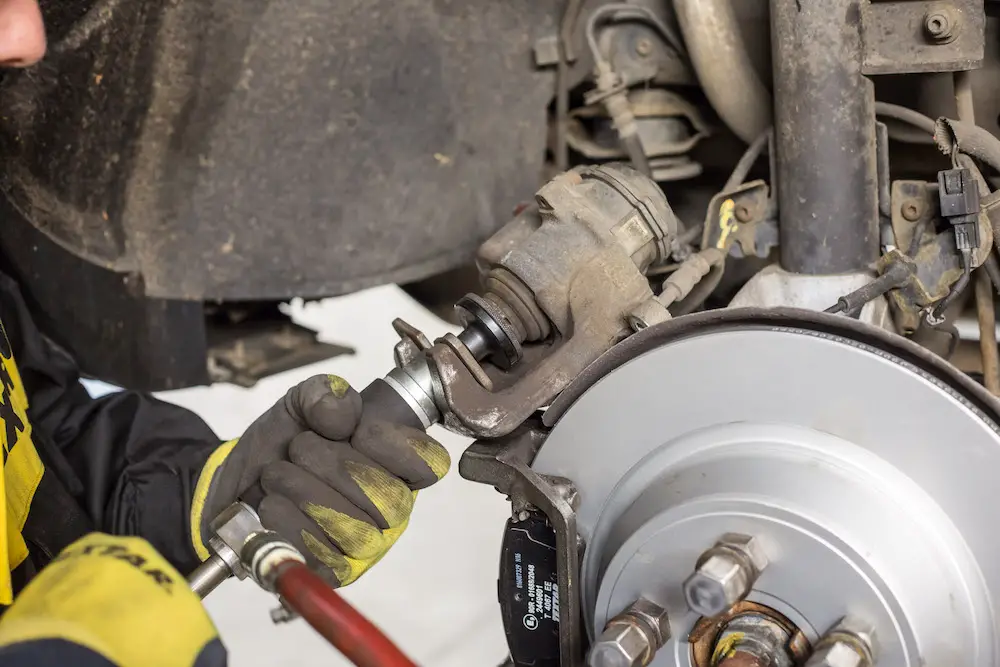Maintaining a vehicle is more than just a routine task—it’s a crucial aspect of road safety. Among the many components that keep a car functioning properly, the suspension system plays a pivotal role. A bad suspension system doesn’t just lead to an uncomfortable ride; it can also significantly increase the risk of accidents.
Understanding the Suspension System
The suspension system of a vehicle is responsible for maximizing the friction between the tires and the road surface, ensuring stability, steering control, and passenger comfort. It consists of several components, including shock absorbers, struts, springs, control arms, and linkages, all working together to absorb and dampen the impacts of road irregularities. This system is crucial for maintaining traction and keeping the tires firmly planted on the road, especially during turns or sudden maneuvers.
A well-functioning suspension system ensures that the vehicle handles properly, providing a smooth and controlled ride. When the suspension system is compromised, however, it can lead to several problems that not only affect comfort but also compromise safety. Understanding how the suspension system works and recognizing the early signs of wear can prevent serious accidents.
Common Issues with Suspension Systems
Several issues can affect the suspension system, each with its own set of warning signs. The most common problems include worn-out shock absorbers or struts, broken or weakened springs, and misaligned wheels. These issues can develop gradually over time due to regular wear and tear or be accelerated by harsh driving conditions, such as driving over potholes or rough terrain.
Signs of a failing suspension system are often subtle at first but become more apparent as the damage worsens. Common symptoms include uneven tire wear, excessive bouncing after hitting a bump, pulling to one side while driving, difficulty steering, and a noticeable dip or squat when accelerating or braking. If any of these signs are present, it’s important to have the suspension system inspected by a professional to prevent further damage and ensure the vehicle’s safety.
How a Bad Suspension System Increases Accident Risk
A faulty suspension system can significantly affect a vehicle’s braking and handling, increasing the likelihood of an accident. When the suspension system is not functioning properly, it can lead to a loss of vehicle control, especially in adverse conditions such as wet or icy roads. For example, worn-out shock absorbers can cause the tires to lose contact with the road, reducing traction and making it harder to stop or maneuver the vehicle.

Additionally, a bad suspension system can cause uneven tire wear, which can lead to blowouts or flat tires while driving. A Murfreesboro personal injury attorney relayed that this can be particularly dangerous at high speeds or on busy highways, where a sudden loss of control can result in severe accidents. Furthermore, a compromised suspension system can affect the vehicle’s ability to maintain proper alignment, causing it to drift or pull to one side. This makes steering more difficult and increases the risk of collisions with other vehicles or obstacles.
The Importance of Regular Maintenance and Inspections
Regular maintenance and inspections are key to preventing suspension-related issues and ensuring road safety. By routinely checking the suspension system, drivers can identify and address problems before they become severe or lead to accidents. Experts recommend having the suspension system inspected at least once a year or every 12,000 miles, whichever comes first. This includes checking the shock absorbers, struts, springs, and other components for signs of wear and damage.
Routine maintenance also involves checking the alignment and balancing of the wheels, as well as inspecting the tires for uneven wear. Addressing these issues early can prevent costly repairs down the line and, more importantly, reduce the risk of accidents.
What to Do if You Suspect Suspension Issues
If you notice any symptoms of suspension problems, it’s essential to take action immediately. First, avoid driving the vehicle in conditions that could exacerbate the issue, such as on bumpy roads or at high speeds. Next, schedule an appointment with a trusted mechanic to have the suspension system thoroughly inspected. Professional mechanics have the expertise and tools necessary to diagnose and repair suspension issues accurately.
When choosing a mechanic or repair shop, look for certified professionals with experience in suspension systems. It’s also a good idea to get multiple quotes and read reviews from other customers to ensure you’re getting quality service at a fair price. Remember, addressing suspension issues promptly can prevent further damage to your vehicle and reduce the risk of accidents.
Staying Safe
A bad suspension system is more than just an inconvenience—it’s a safety hazard. By understanding the risks associated with a faulty suspension system and recognizing the early warning signs, drivers can take proactive steps to maintain their vehicles and prevent accidents. Regular maintenance and inspections are crucial for ensuring the suspension system remains in good working order, providing a safe and comfortable driving experience. Don’t wait until it’s too late—make vehicle safety a priority and keep your suspension system in top condition.






